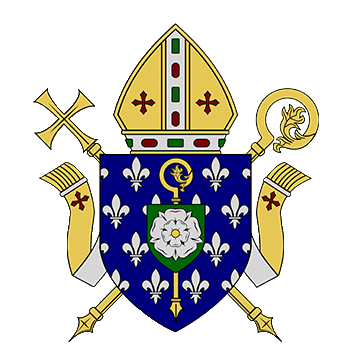A short history of the Parish of St.Thomas of Canterbury and St. Joseph Goole.
Here are some notable dates from around our area.
736 A.D:- the first church at Adlingfleet.
St Oswald Church Crowle has 9th Century features.
1250:- The present church at Adlingfleet built.
1069:- The Abbey at Selby founded.
1069:- Rawcliffe Estate given to Selby Abbey by William the Conqueror
1100s :- Henry I gives Airmyn to St Mary's Abbey, York
1130:- Whitgift Church built. This was prone to flooding and was destroyed in 1240.
By 1300 the Church of St Mary Magdalene had been built.
1214:- Baron John De Howke, of Hook House, obtained from the Abbot of Selby a license
to build a chapel for his manor house.
1225:- The first Hook church consecrated.
The village church at Carlton, was a private chapel given by the Stapleton family.
Howden Minster:- first belonged to the monks of Peterborough Abbey, until Edward
the Confessor took it away from them and gave it to the Bishops of Durham.
The following facts which relate to the area around Goole are taken from the Catholic Recusants of the West Riding of Yorkshire 1558-1790, by Father Hugh Aveling, O.S.B.
1567:-The Incumbent of the Parish of Howden was reported to be still celebrating Requiem
Masses, a thing specifically forbidden by law.
1569:- John Saltmarsh, of Reedness, was together with Brian Palmes, of Murton in Co. Durham,
indicted for his part in the rising of the North.
1570:- The curate of Hook was reported for being a non-communicant, a sure sign that as a
catholic priest he refused to accept either the validity of the new communion
service or the validity of his parish priest’s ordination.
About the same time Thomas Empson, of Goole Hall, was sentenced to the confiscation of his
land for the crime of being a Catholic, but probably because of the quality or
situation of the land. The confiscation was changed to a fine of £479.00.
August 8th 1586- John Fingley, of Barmby on the Marsh, Howden was executed for being a
priest.
1589:- An epitaph was erected in Adlingleet Church asking visitors and parishioners to
remember Francis Haldenby, a recently dead parishioner, in their prayers, and to
say a “Pater” (Our Father) and an ‘Ave’ (Hail Mary) for his soul a sure sign
that he, his family who set up the stone, and the parishioners who attended the
church, were all Catholics, it being illegal to pray for the dead.
March 11th 1616:- Thomas Atkinson of Howden was executed for being a priest.
Throughout these turbulent years many people had stayed loyal to the faith. The Stapleton family of Carlton held secret religious services in their house Carlton Hall. However they also suffered for it.
1580:- Brian Stapleton was gaoled for recusancy.
1680:- Sir Miles Stapleton of Carlton accused of complicity in Titus Oates' Popish Plot. He
was tried at York for high treason, but was acquitted by a special jury who were
mostly Yorkshire gentry.
23rd October 1680- Fr Thomas Thwing, Sir Miles Stapleton’s chaplain was accused of
treason. He was hanged, drawn and quartered at Knavesmire, near York.
Change was all around, not only in the religious sense but also in the structure of the land. The area around Goole was marshland and was always flooding. In 1826 Charles I granted the Dutch engineer Cornelius Vermuyden a charter to drain the Royal Forest of Hatfield Chase. Part of this scheme was the cutting of the Dutch river from New Bridge at Cowick to Goole.
The Aire and Calder Navigation Company was formed in 1698, but would not be introduced to
Goole until a century later.
The Navigation had an act passed in 1820 which enabled them to build a canal from
Knottingley to Goole and to also construct a dock scheme. On July 20th 1826 the Port of Goole was officially opened.
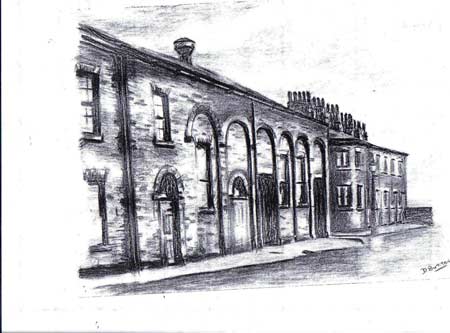
The building of the canal and docks had brought many people looking for work, they were mostly Irish people, who had fled the potato famine. Goole had a large Irish population. During the 1840’s/1850’s a Catholic revival was taking place with building of catholic churches and chapels, as the churches that had gone through the reformation had been converted to Anglican worship.
In the Goole and Marshland Gazette of December 1864 appeared the following
advertisement.
To the Catholics of Goole and neighbourhood his Lordship the Bishop of Beverlet has instructed me to open the new mission in Goole
in the Scientific Hall, Adam Street, on Sunday 11th December 1864.
Morning service at half past ten o clock. Afternoon service and catechism for the children three o clock. Rev Thomas Rigby.
The building is now listed grade 2. Catholic services continued at the Scientific Institute for several years,
but it was thought that a more desirable place of worship was needed.
On Monday July 12th 1870 the chapel and schools of St Thomas of Canterbury were
opened.
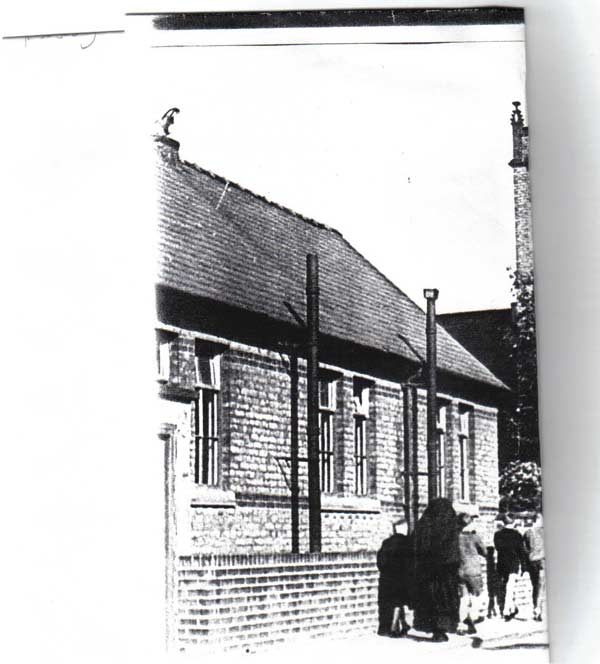
A presbytery was also being built. The architect was Mr Hatfield of Sheffield, the builder Mr Elliott of Goole.
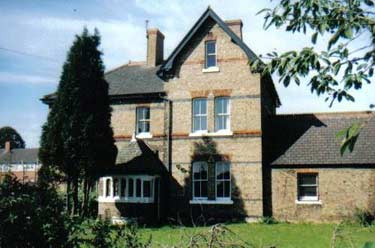
Sunday September 23rd 1877 saw the opening of the larger St. Thomas of Canterbury church, by Cardinal Manning. Architect-Messrs Goldie and Child of London. Builder- Mr. Elliott of Goole.
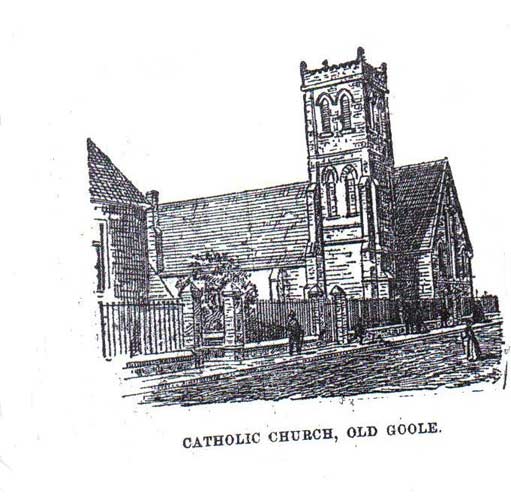
Work on the convent was also being prepared as the plans had been passed by the local board.
1879:- nuns were sent to the convent but by 1880 they had gone.
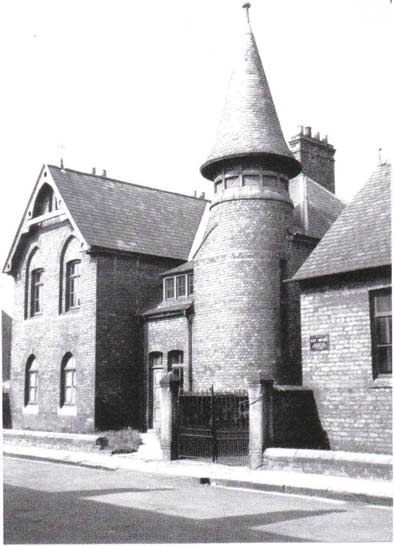
1905 a club was set up in the convent known as the catholic club. The priest at St Thomas’ at this time was Fr George Pearson who was parish priest from 1875-1905. It was he who set the wheels in motion for the church to be built in 1877 and raised enough money to purchase land in Pasture Road in New Goole.
